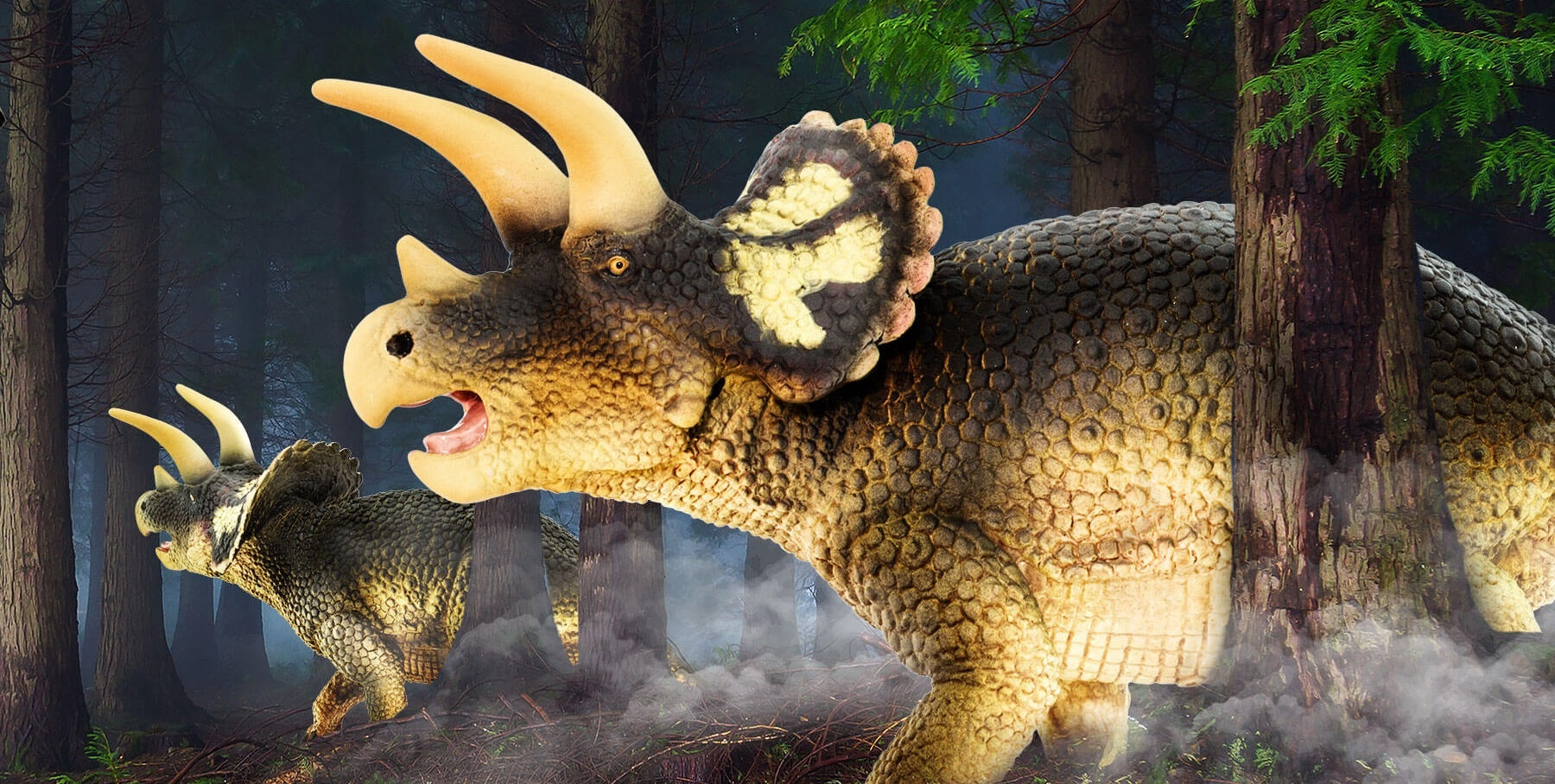What are Ceratopsian Dinosaurs?
The group of dinosaurs known as ceratopsians are some of the most popular and recognizable dinosaurs, due in large part to their ornate arrangements of facial horns and large shields-like frills on their heads. Any movie, book, or video game about dinosaurs is likely to feature at least one of these horned beasts. The word “ceratopsian” means “horned face” and these large plant-eaters more than lived up to that name. Though they first developed in the Late Jurassic Period, around 160 million years ago, the later species were some of the last non-bird dinosaurs to roam the Earth before the mass extinction of the dinosaurs at the end of the Cretaceous Period around 65 million years ago.
were plant eaters, and are believed to have occupied a similar role to the rhinoceros of today. The bones of many individuals have been found together, leading scientists to theorize that many species were social animals that moved in herds. The most famous ceratopsian, Triceratops, is mostly known from single individuals, so unlike many other ceratopsians it was long believed to live alone. Recently, however, young Triceratops skeletons were found near each other, leading paleontologists to believe that these dinosaurs may have traveled in herds as juveniles to give them a better chance of survival.
One of the earliest ceratopsians was Psittacosaurus, which means “parrot lizard”. Like others in its group, it had a heavy, sharp beak, but other than that it was quite different from most of its descendants. Psittacosaurus lacked the iconic frill of later ceratopsians, and was mostly bipedal – that is, it walked on its two back legs rather than on all fours. Psittacosaurus lived in Mongolia in the Early Cretaceous, around 125 to 100 million years ago. There are a few things that make this dinosaur really stand out to paleontologists who study these creatures. One particular specimen was discovered that showed these dinosaurs had a unique row of bristle-like quills along their tails. This same specimen also contained pigment that allowed scientists to determine some of its coloration, which was brownish and counter-shaded (meaning darker above and lighter below), with clusters of spots in various areas.
Later ceratopsians would evolve to be much larger than Psittacosaurus, with a fully quadrupedal (four-legged) stance. There are many different types of ceratopsians, most known only from their skulls, which were durable and sturdy and thus preserve well as fossils. In these cases, how their bodies looked is based upon their relatives who are known from more complete skeletal remains. Some ceratopsians, like Pachyrhinosaurus and Triceratops, have even left skin impressions behind that show that their bodies were covered in scales. There is some debate among scientists about just how many ceratopsian types there were, with some arguing that different skull shapes and horn lengths may just be simply older, more mature examples of the same species, rather than a completely new type of dinosaur.
The arrangement of horns among ceratopsians varied widely. Some had long horns above their brows, like Diabloceratops (named for its devil-like brow horns) and Nasutoceratops (which had forward-curving, cow-like horns). Both dinosaurs have no real nose horns to speak of. Others had very prominent nose horns and little to no brow horns, like Vagaceratops, Einiosaurus, or. Some had both brow and nose horns, like the recently discovered Regaliceratops, or no horns on the nose or brow, like Pachyrhinosaurus, which instead had a large flat mass of bone known as a “boss” on its nose. However, one thing each of these ceratopsian dinosaurs did possess was a large bony frill. Sometimes these frills sprouted large horns, as in Diabloceratops and Einiosaurus, or sometimes they had numerous curved spikes, as in Pachyrhinosaurus, or a crown-like arrangement of plates, as in Regaliceratops.
The most famous ceratopsian of all, however, is undoubtedly Triceratops, the “three-horned face”. This dinosaur features a fairly rounded frill, a small horn on its nose, and two huge horns sprouting above its eyes. It was one of the largest ceratopsians at almost 30 feet long, and had one of the largest skulls of any land-dwelling animal in history. One of the reasons for its popularity is that it is almost completely known from a large number of fossilized skeletons.
Named by Othniel Charles Marsh in 1889, Triceratops has captured the imaginations of adults and children alike for nearly 120 years. Since the discovery of this amazing dinosaur, dozens of ceratopsian species have been described. Their unique and fantastical frills and horns continue to change and shape what we know about these magnificent beasts of the past.







